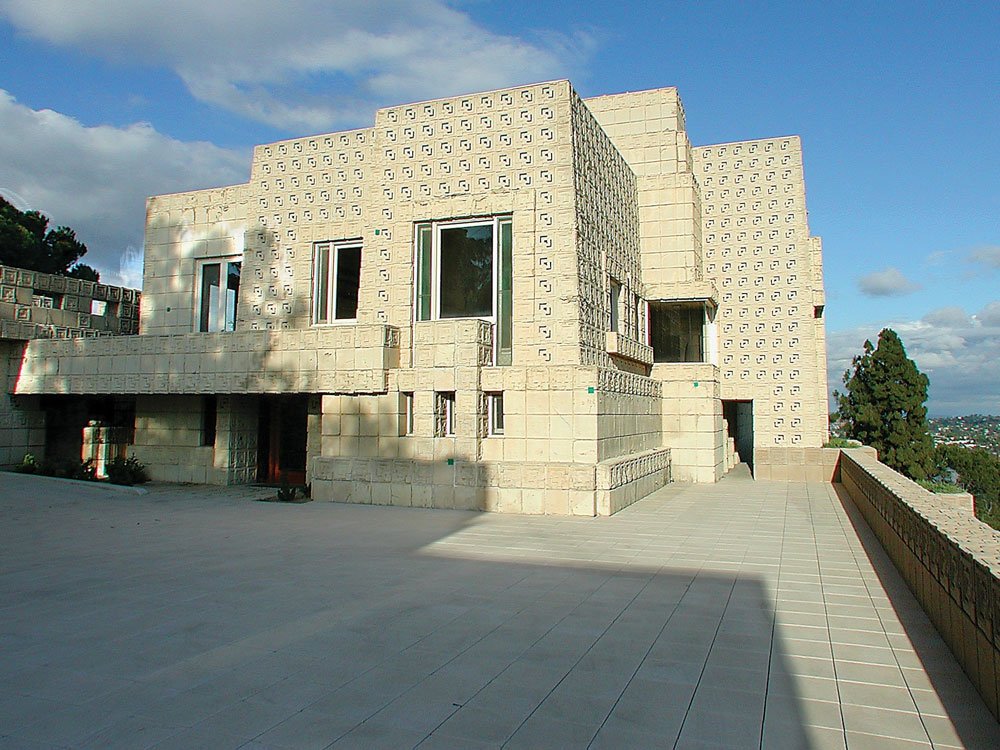#11938. Ennis House: Monumental Mayan-Inspired Textile Concrete Block Facade
The photograph depicts the famous Ennis House, designed by Frank Lloyd Wright in 1924. It is one of the most outstanding examples of textile concrete block in his work. The facade of the building is a complex composition of decorative concrete blocks with a repeating geometric pattern, giving the building a unique relief character.
The distinctive feature of the facade lies in the use of blocks with a pattern inspired by Mayan architecture, creating a rich play of light and shadow on the surface. The horizontal layout of the structure with protruding volumes and terraces is characteristic of Wright's "organic architecture." Windows are integrated into the overall composition of the facade without disrupting its rhythmic structure.
The facade material—textured concrete in a sandy hue—harmonizes with the surrounding landscape and California sky. The spacious terrace in front of the house emphasizes the building's connection to the surrounding landscape, which is one of the key principles of Wright's architecture.
In modern private construction, similar techniques can be applied on a more modest scale: using decorative concrete blocks with relief patterns for accent parts of the facade, combining different levels and volumes in the composition of the house, and paying attention to integrating the building into the surrounding landscape through terraces and open spaces.
